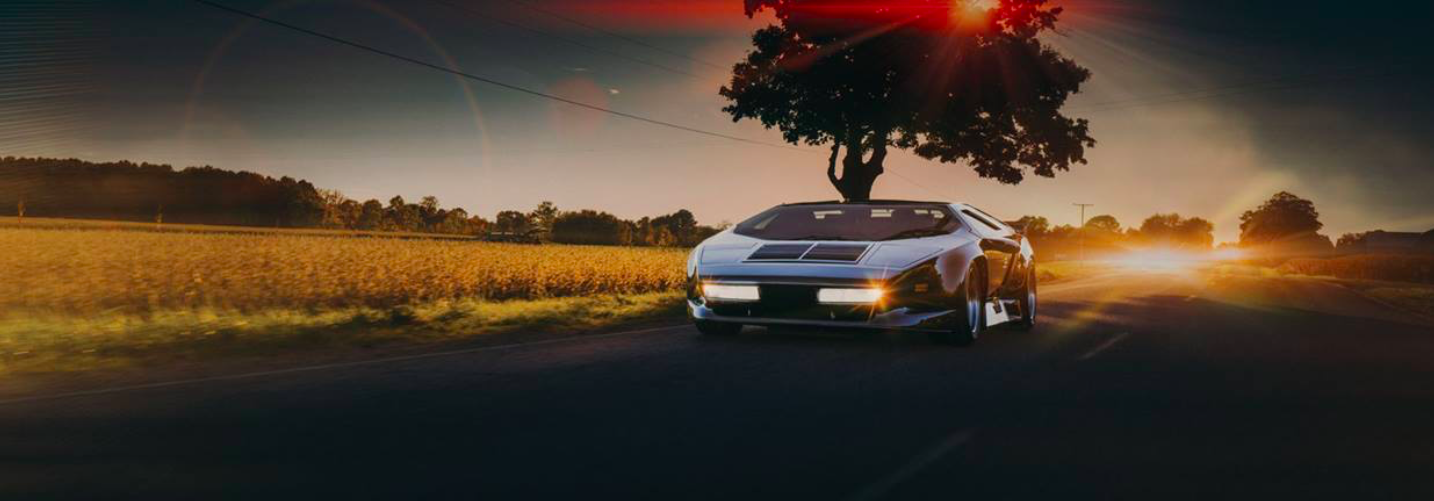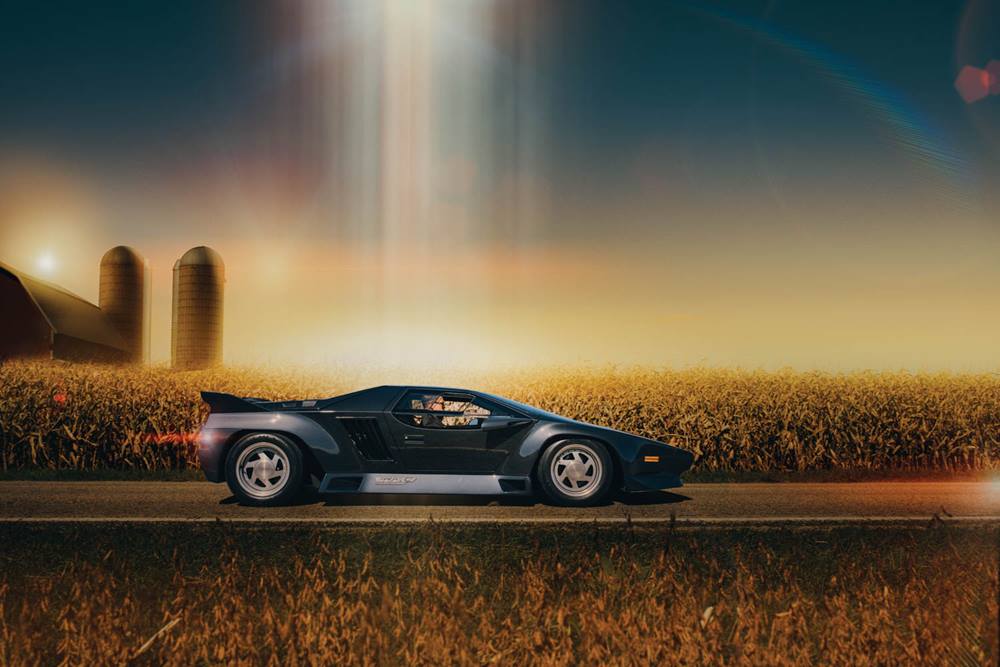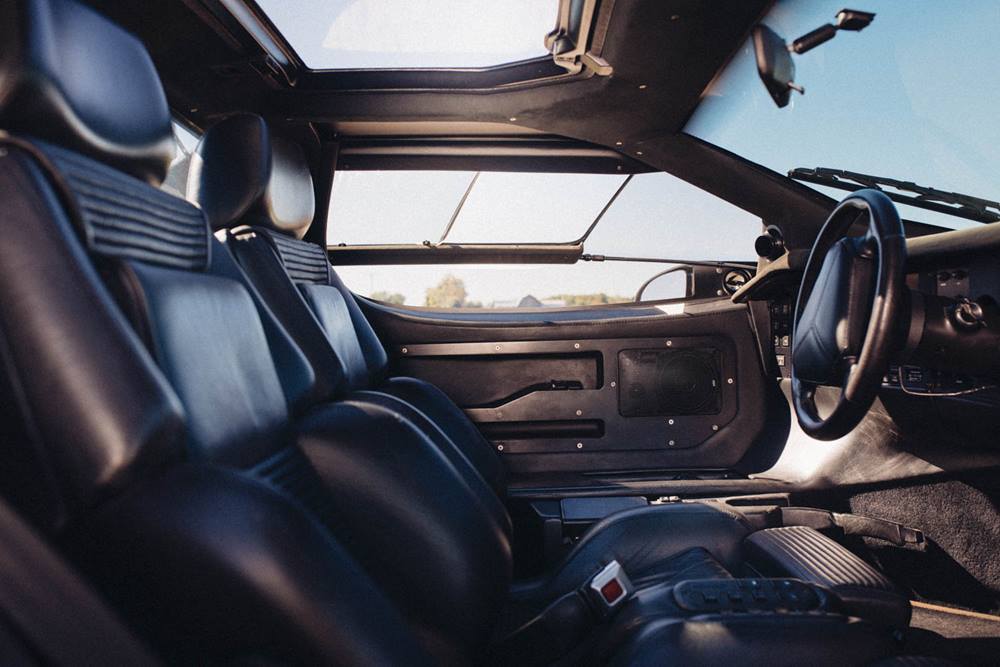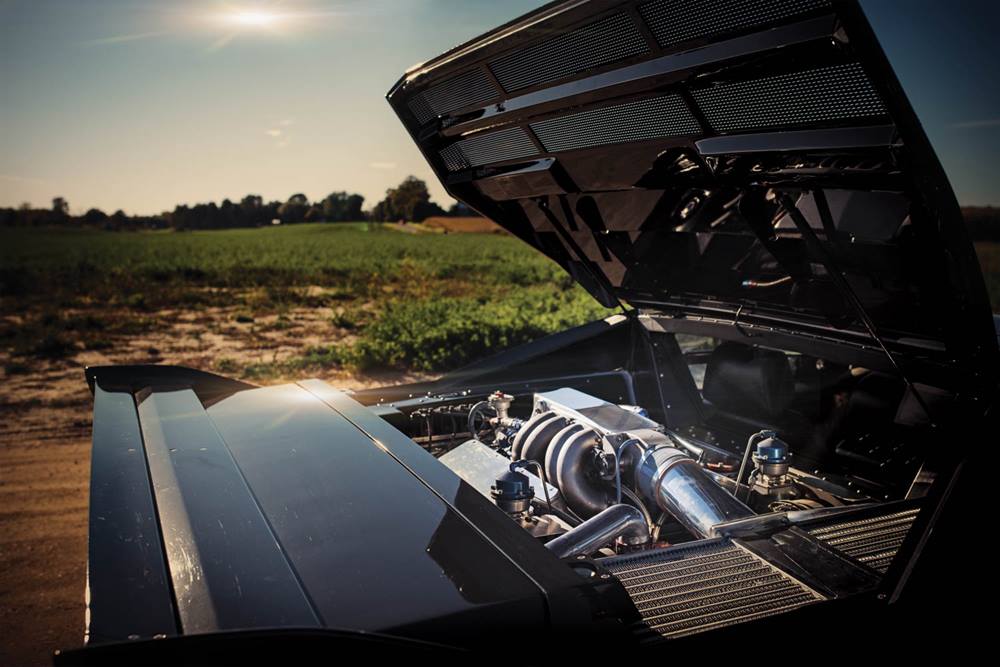There’s a traffic jam in Clarksville, likely a first for this tiny hamlet in the middle of Michigan. There are 400 residents in this town, one stoplight, and not a rush to any hour. Yet on this sunny autumn day, every car that approaches immediately slows to a crawl as the driver fumbles for a phone, presumably to nab photo evidence of the outlandish machine parked in front of the bank.

The driver of a rusty Chevy Malibu rolls down his window and yells, “Is that a kit car?”
“I get that question a lot,” says Bill Papke, owner of the black Vector W8. “It always draws a crowd.”
We’ve met Papke in Clarksville because it’s about midway between his home in Grand Rapids and Hagerty’s Ann Arbor office. It seemed like a quiet enough place for a day of driving and photography. We wanted to know if the Vector—some three decades after an 18-unit production run—was a legit supercar or a machine that rightfully flamed out.
This article originally ran in Hagerty magazine, the exclusive publication of the Hagerty Drivers Club. For the full, in-the-flesh experience of our world-class magazine—as well other great benefits like roadside assistance—join HDC today.

Within a few minutes of arrival, we’ve learned lesson number one: There’s nothing subtle about the Vector.
The rubberneckers might be wondering if the black machine was behind the crop circles left in a nearby wheat field back in 1993. The UFO reference has been with the car ever since Car and Driver featured the Vector on the cover of its December 1980 issue. That cover photo, which showed a Vector W2 prototype at dusk on a dry lake bed with an eerie red background, certainly made the car look otherworldly. The gushing story introduced Jerry Wiegert, the creative force behind the car, and promised an American supercar constructed with aerospace technology that would blow away the best from Europe.
I must have read that story 100 times. The magazine was a gift from my father when I was 10 years old, and I had no idea my life course had just been set. Fifteen years later, in 1995, I arrived at the Car and Driver office to beg for a job. I’ve been writing about cars ever since.
By that time, the Vector was played out. The gritty details of the Vector’s trajectory are in the Wiegert profile you can read here, but in brief, a decade after that first Car and Driver story, the magazine’s editors finally tested an early prototype. With a twin-turbocharged V-8 that Vector claimed produced 625 horsepower, the W8 rocketed to 60 mph in 3.8 seconds. But the automatic transmission failed repeatedly, and the testing crew wasn’t able to get the car anywhere near its supposed top speed of more than 200 mph. The eagerly anticipated Vector simply wasn’t ready for prime time, and its long gestation had sapped any editorial goodwill the magazine might otherwise have bestowed on such an ambitious project. The W8 was summarily dismissed. Wiegert ran out of money, and the Vector joined the towering pile of failed automotive start-ups.

If the reaction of Clarksville’s residents is anything to go by, however, the Vector’s design still kills. Papke is the second owner of our test subject, which carries the 001 serial number. He purchased it in the early Nineties after it had briefly been owned by a Saudi sheikh. Papke was captivated by the idea of a jet fighter for the road. Even from a few feet away, the craftsmanship is obvious. The panel gaps are consistent throughout, the rivets are precisely spaced, and everything fits perfectly. Handmade cars often don’t match the quality of mass-produced machines, but kit car? No.
Papke opens the scissors door. Getting inside is tricky because you have to hurdle a 12-inch-wide sill and a recessed basket-handle shifter before you settle into a Recaro seat. The dash is familiar to anyone who’s watched the movie Top Gun. To the left of the steering wheel, there’s a status screen with an illuminated outline of the car. The gauges are vertical digital scales, and there’s a panel of exposed circuit breakers. The cruise-control button doesn’t read “on” but rather “engage.” It’s impossible not to feel like you’re about to take flight.
That, of course, is the point. The stated or implied mission of any supercar is speed, but speed is just a turbo V-8 away. First and foremost, the supercar has to deliver dramatic theater, an experience of anticipation and wonder. If you’re not buzzing with excitement—and, trust me, I am—when you pull down the door, then what’s the point?


Supercars from the Vector’s era, like the Ferrari Testarossa, Ferrari F40, and Lamborghini Countach, followed a similar formula and also demanded certain contortions from the driver. The Vector’s cabin is tight—Papke, in the passenger’s seat, and I are nearly rubbing shoulders—but the relationship among the pedals, steering wheel, and seat feels natural. I twist the GM-sourced key in the ignition, and the engine fires.
The familiar small-block engine burble is joined by a buzzing fuel pump. There’s a slight pause after I slide the shifter rearward until the gearbox engages. And just like that, the day the 10-year-old Larry could never even dream of is here.
First impression: The car is tightly screwed together. There’s nary a rattle as we pass over train tracks on our way out of town. To my surprise, the partial side window slides gracefully open in its tracks. The upshifts are noticeable, as if the usual slushbox slop had been dialed out. Finally, we get onto a clear road. I channel my inner child and floor it.
And then we wait. The transmission bangs down a gear, the engine inhales, the turbos spool—all the mechanical bits get their act together—and then warp drive! We clear 80 mph in one gallop, 100 in the next. Now the engine feels like it’s been unshackled and is eager for the opportunity to run. But we’re quickly out of room, so I lift. The waste gates whoosh in protest.
We find more open stretches. The frustration of the lag is countered by that same intoxicating rush. The sound from the whistling turbos and gushing waste gates drowns out the surprisingly subdued exhaust. I could do this for days. There are, however, pictures to take, so I swing around to meet up with our photo crew’s van.

With the adolescent maneuvers out of the way, I get a more nuanced view of the W8. Over patched Michigan roads, the Vector’s suspension is unexpectedly compliant. The brakes feel strong and predictable. The only demerit is the steering, which feels overly insulated from the road, but that could be because our car wears the same tires it was delivered with. That aged rubber also means I won’t be exploring the outer limits of the Vector’s handling.
Still, as I get used to the Vector, I realize it is more long-legged cross-country missile than hard-edged speed machine. Based on all I’ve read about the car, I frankly didn’t expect this level of polish. The Vector works in a way that suggests the engineers put some real thought behind how the car would operate and weren’t simply after a quick way to get that striking design onto the road. The Vector is by no means perfect—the shifter, for example, has trouble finding reverse—but Papke’s was the very first production car, and there are inevitably a few bugs to work out. For a complex car from an automotive start-up, the W8 is startlingly complete.
Long before I’m ready to give up the key, my brief drive of the Vector is over. On my way back to Ann Arbor, I mull over how best to view the W8 with the benefit of hindsight. I remember the justified skepticism of those earlier reviewers who’d waited over a decade for a car that promised to upend the supercar paradigm. When the prototype didn’t deliver, I can understand how they concluded that if it wasn’t ready after 10 years, it probably never would be. They moved on. I would have, too.

The car I drove, however, felt legit, like Wiegert was on the cusp of something. There is the unfortunate matter of an engine that delivered the power but wasn’t far enough removed from the one in a Chevy Camaro. Yeah, it’s an American engine, but the Vector’s price rose to nearly half a million dollars, some three times more than a contemporary Testarossa. Value judgments in the supercar world are largely futile. They don’t make financial sense, but supercars are supposed to be exotic. Wiegert knew this and planned an all-new engine before he ran out of money.
Let’s imagine Wiegert had managed to make his own engine. Then what? Well, in 1994, the McLaren F1 appeared and—boom—there it was, the supercar that rewrote the rulebook. The W8 by then was a 20-year-old design. It makes you wonder how the Vector would have been received if it had appeared in 1985 rather than 1990. I’d wager we’d be looking back on the W8 as the one that changed everything, at least until the Porsche 959 hit the streets in 1986.
That’s the rub. How you view the Vector depends on your outlook. It’s an automotive David-and-Goliath tale. I’m a sucker for the dreamers who do more than talk, the ones who inspire others to do things like drive to Michigan in search of a dream job at a car magazine. Wiegert, you’ll soon read, is equal parts genius and his own worst enemy—a fascinating character. The equally enigmatic Vector W8 deserves not to be viewed as a failure. After all, Wiegert bootstrapped a car company and got farther than most. That counts.
Report by Larry Webster for hagerty.com
Photos by Roy Ritchie










